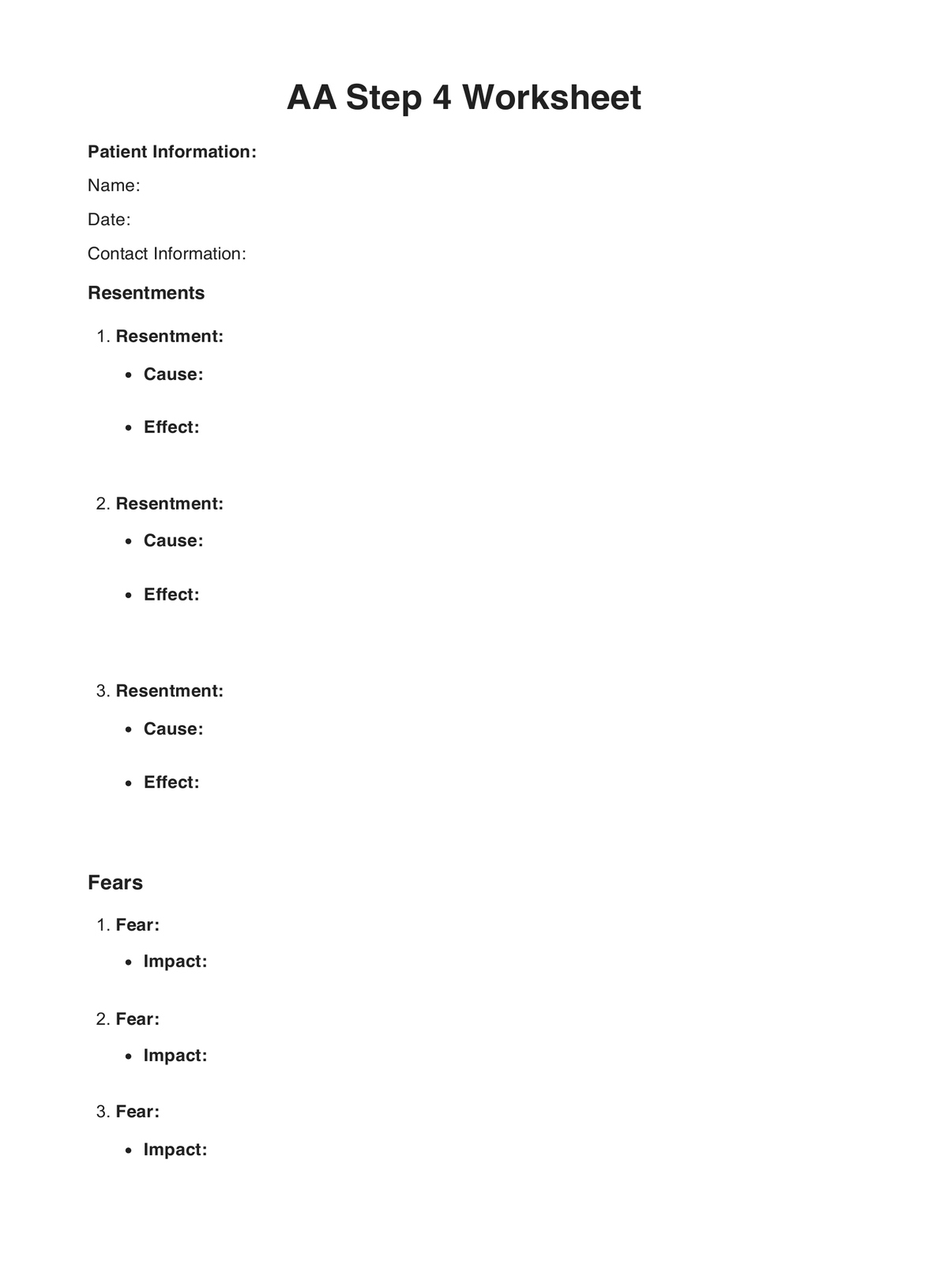To conduct a 4th step inventory in Alcoholics Anonymous (AA), individuals typically make a searching and fearless moral inventory of themselves. This involves reflecting on personal resentments, fears, and harmful behaviors, identifying patterns, and exploring underlying emotions.

AA Step 4 Worksheets
Get support with your recovery journey using the AA Step 4 Worksheet. Explore self-awareness and healing. Start your path to sobriety today.
AA Step 4 Worksheets Template
Commonly asked questions
The columns in the 4th step inventory often include headings for resentments, fears, harms done to others, and sexual conduct. These columns help individuals organize and analyze their moral inventory systematically, allowing for a structured examination of their thoughts, emotions, and behaviors.
There is no set timeline for completing the 4th Step. Depending on the individual, it is a highly personal process that can take days, weeks, or even months. The key is to approach it with honesty, thoroughness, and a commitment to self-reflection rather than rushing through it.
EHR and practice management software
Get started for free
*No credit card required
Free
$0/usd
Unlimited clients
Telehealth
1GB of storage
Client portal text
Automated billing and online payments











